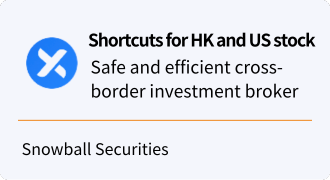US Stock Margin Trading Guide: Initial vs Maintenance Margin
As an experienced analyst specializing in quantitative trading of U.S. stocks, I know that many investors are confused when they start trading U.S. stocks on margin. Today, let me take you on a deep dive into the key concepts of US equity margin trading to help you safely navigate this market of opportunity.
Ⅰ. Basics of U.S. Margin Trading
Margin trading in U.S. stocks is strictly regulated by the SEC (U.S. Securities and Exchange Commission) and FINRA (U.S. Financial Industry Regulatory Authority). Compared with other markets, the margin rules for US stocks are more standardized and strict.
1.1 Regulation T (Rule T)
This is the core rule for margin trading set by the Federal Reserve:
- Establishes a minimum initial margin requirement of 50%.
- Applies to all U.S. stock brokers
- It ensures market stability and investor protection.
Ⅱ. Initial Margin Explained
Initial Margin is the minimum amount of money you must have to start trading on margin.
2.1. Calculated by
Take for example the purchase of $10,000 worth of shares:
Stock Market Capitalization = $10,000
Initial Margin Rate = 50% (Regulation T requirement)
Initial Margin Required = $10,000 × 50% = $5,000
Maximum Borrowing Amount = $10,000 - $5,000 = $5,000
2.2. Important Note
- Some brokers may require a higher initial margin rate.
- Higher margins may be required for more volatile stocks
- Some stocks may not allow margin trading at all
Ⅲ. Maintenance Margin
Maintenance Margin is the minimum level of equity that must be maintained in an ongoing margin account.
3.1. FINRA regulations
- The minimum maintenance margin rate is 25%.
- Calculation formula:
3.1.1 Continue using the above example
Stock market capitalization = $10,000
Maintenance Margin Rate = 25%
Minimum Maintenance Margin Requirement = $10,000 × 25% = $2,500
3.1.2 Broker Specific Requirements
- Most brokers use a maintenance margin rate of 30% to 40%.
- Some high-risk stocks may require 50% or more.
- Requirements may be temporarily increased during periods of market volatility
Ⅳ. Margin Calls
A margin call is triggered when the equity of an account falls below the maintenance margin requirement.
4.1. Practical case studies
Initial Investment:
- Stock Purchase: $10,000
- Own funds: $5,000
- Borrowed funds: $5,000.
4.1.1 Scenario 1: Stock falls 20%
New market value of stock = $8,000
Account Equity = $8,000 - $5,000 = $3,000
Maintenance Margin Requirement (30%) = $8,000 × 30% = $2,400
Result: Temporarily safe, no margin call triggered
4.1.2 Scenario 2: Stock falls 30%
New stock market capitalization = $7,000
Account Equity = $7,000 - $5,000 = $2,000
Maintain Margin Requirement (30%) = $7,000 × 30% = $2,100
Result: Margin Call Triggered
Ⅴ. Risk Management Strategies
5.1. Setting Personal Margin of Safety
- Maintain a 50% or more account capital buffer
- Avoid taking full positions
5.2. Diversify portfolio
- Hold no more than 20% of total investment in a single stock.
- Focus on industry diversification
5.3. Establish stop-loss discipline
- Set specific stop loss levels
- Strictly enforce the stop-loss program
Ⅵ. Special situations
5.1 For volatile stocks
- Suggest higher margin provisions
- Consider using limit orders instead of market orders.
- Keep an eye on the company's fundamentals
5.2 What to do during financial reporting
- Replenish your margin cushion in advance.
- Watch pre and post market volatility
- Consider reducing leverage.
Ⅶ. Advanced Margin Strategies
Will be discussed in depth:
- Portfolio Margin Strategies
- Options Margin Calculations
- Cross-market margin optimization
- Setting up an automated risk monitoring system
In another article, we will introduce “Strategies for Portfolio Margin Accounts in US Stocks”, which will help you to further optimize the efficiency of your margin usage.
Ⅷ. Conclusion
Although U.S. stock margin trading provides investors with greater capital efficiency, it also brings corresponding risks. It is recommended that novice investors:
- start with lower leverage
- ensure that you fully understand the margin rules
- establish a sound risk control system
- maintain sufficient cash reserves
Investing is a long-distance race, the rational use of margin can enhance the return, but excessive use may bring disastrous consequences. Do you have any experience or confusion in US stock margin trading? Welcome to share and discuss in the comment section.






